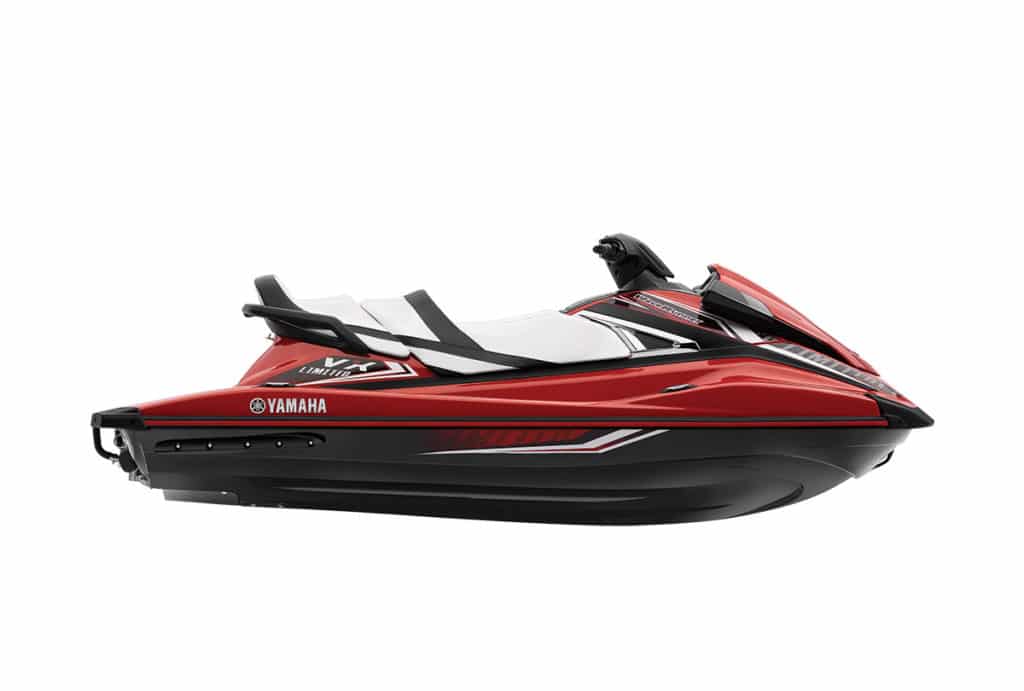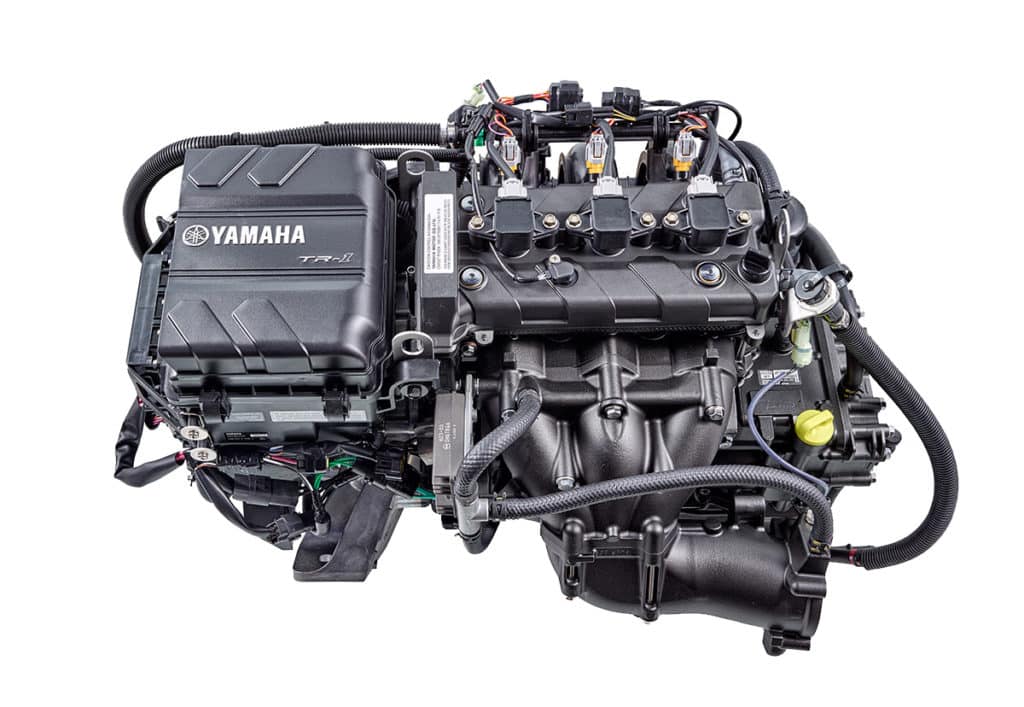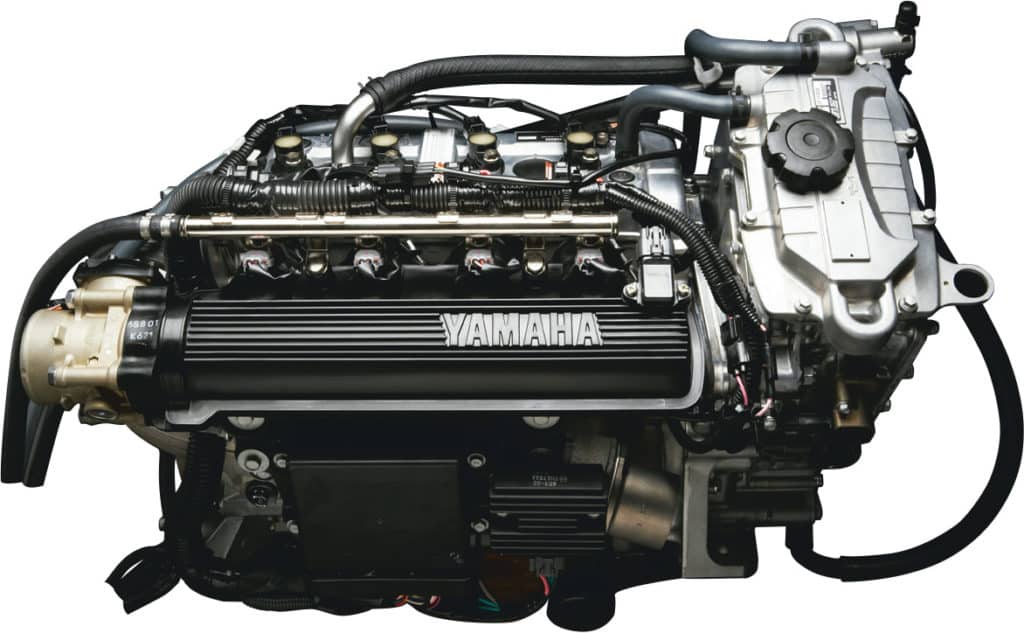

Personal watercraft riders made Yamaha’s VX WaveRunner line a sales leader for over a decade, but the models’ venerable 110 hp, 1,052 cc MR-1 engine was beginning to show its age. So the first new engine since the VX’s introduction will make its appearance in 2016. The TR-1 High Output debuts in six new models: the V1, V1 Sport, VX, VX Deluxe, VX Cruiser and VX Limited.
According to Yamaha’s watercraft product manager Scott Watkins, it was a big task replacing an engine that has successfully powered more than 200,000 units.
“We wanted Yamaha reliability, we wanted it to be smaller in size and lighter in weight, have better fuel economy with more power and, of course, be more fun.”
The 1,049 cc, three-cylinder, dual-overhead-cam TR-1, based on a similar engine used in the company’s snowmobile division, delivers on all fronts. Featuring nominally smaller displacement than its predecessor, it nonetheless produces 13 percent more power. It’s also more compact, trimming 40 percent off the size of the four-cylinder MR-1 (30 by 21 by 19 inches versus 42 by 22 by 21 inches). At 160 pounds, the TR-1 also shaves 20 percent in weight. Aside from one less cylinder, it also lacks a reduction gear. A staple of the high-revving MR-1, the gear (“a huge mass that we wanted to get rid of,” Watkins notes) isn’t essential to an engine that peaks at a lower 8,000 rpm. The oil tank has also been integrated, both the exhaust manifold and muffler are more compact, and the electronics and air filter are attached to the engine.
With the reduction in size, the TR-1 promises to be easier to work on within the confines of a PWC engine compartment. Smart design takes it one step further. Oil is removed via a dedicated extraction port topside. The oil filter has been relocated topside as well for easier access but also to reduce corrosion. Exchanging the air filter is also now tool-free; just flip open the intake air box for access.
Early tests of the TR-1 confirm the engine surpasses the MR-1. The engine responds with a crisp, powerful feel off the bottom end and continues to accelerate strong throughout the power band. The midrange benefits especially. During a heat-soaked July test day outside Atlanta, I recorded top speeds between 53.3 and 55.3 mph on various models. Fuel consumption also impressed with 3.7 gph burned at a 30 mph cruise and only 8.3 gph at top speed.

Looking Astern – 2002
Yamaha was the first to bring a PWC with a four-stroke engine to market. The year was 2002. That engine was the MR-1, the same model — sans supercharger — that would ultimately power the affordable VX models three years later. VX models would go on to top the PWC sales charts for over a decade.









